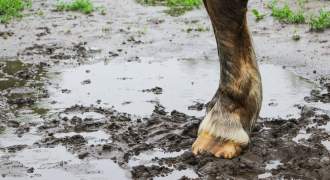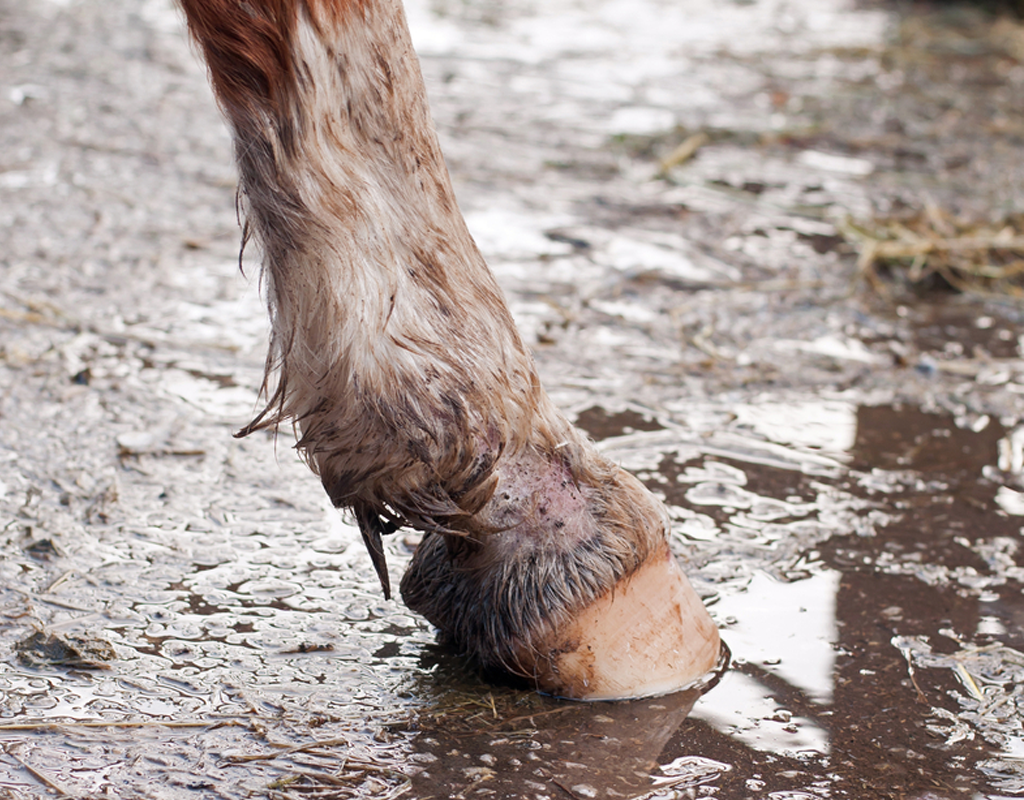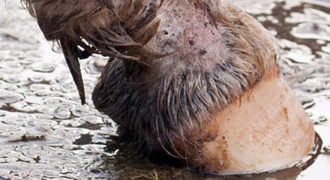
How to prevent mud fever?
How can I prevent mud fever? For the most part it’s all about keeping the legs clean and dry: Avoid muddy paddocks Try cr......
23 February 2018
Read More
What is mud fever you ask? Mud fever is enough to make any horse owner hot under the collar. It’s a persistent skin problem, usually on the lower legs of the horse and often occurring in damp, muddy conditions. It’s notoriously common in the UK’s gloomy, wet winters, can affect any type of horse or pony and can be awkward to control, despite meticulous care.

Mud fever is in fact a collection of diseases that can affect the skin and cause inflammation of the lower limbs. Probably the most accurate term to use for the condition is pastern dermatitis (meaning inflammation of the skin on the pastern) but mud fever still tends to be the most popular description. It’s easiest to think of mud fever as a syndrome rather than a diagnosis – it’s the way skin on the pastern reacts to a variety of insults. The condition can become chronic if the skin becomes infected or any other underlying cause is not resolved.
What causes mud fever?
Bacterial infection is often involved but it may not be the primary cause of the syndrome. Wet muddy conditions, genetic factors or other damage to the skin can predispose the legs to further damage from a variety of primary factors such as fungal, bacterial or parasitic infection, photosensitisation/sunburn, allergy or genetic-based immune disease. These may occur individually or in any combination.
Horses that are kept on wet, muddy ground may lose some of the protective properties of the skin barrier on their legs which, coupled with the primary factors, can then set up a cycle of chronic damage. As the condition progresses bacteria, even if they were not originally involved, can invade and perpetuate the problem. The horse’s legs subsequently become inflamed and itchy and scabs form over the sores. If bacteria are present the scabs can seal in the infection. The scabs usually form on the pasterns and may become crusty and ooze pus, causing hair loss and considerable discomfort.
Often, horses with white legs can be more susceptible to mud fever as their skin can be more sensitive. Horses with feathers also tend to be vulnerable because their legs will stay wet and warm under all that hair, providing the perfect environment for bacteria and parasites to thrive.
Related content:
How to prevent mud fever
References
Anthony (2013) pastern dermatitis. Vet Clin Equine 29 (2013) 577–588

How can I prevent mud fever? For the most part it’s all about keeping the legs clean and dry: Avoid muddy paddocks Try cr......
23 February 2018
Read More
How do I treat mud fever? If you think your horse may have mud fever it’s always best to speak to your vet. Every case is di...
23 February 2018
Read More
What is mud fever you ask? Mud fever is enough to make any horse owner hot under the collar. It’s a persistent skin problem,...
19 February 2018
Read More